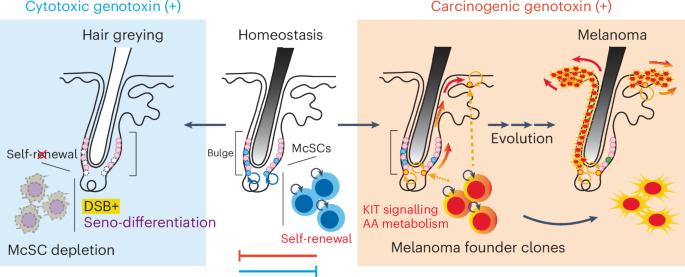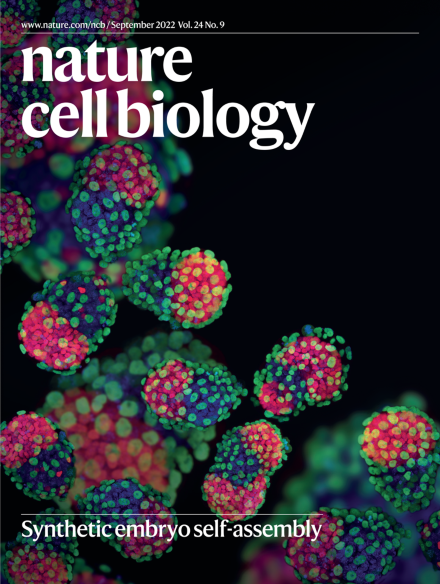衰老耦合分化选择性地消除易患癌症的干细胞。
IF 19.1
1区 生物学
Q1 CELL BIOLOGY
引用次数: 0
摘要
衰老和癌症通常被视为不同的组织命运。在我们的研究中,我们确定了一种保护程序,称为衰老偶联分化(或seno-differentiation),通过推动它们分化来消除易患癌症的干细胞。黑素细胞干细胞是遵循这条路径还是在致癌压力下绕过它,决定了组织的结果:头发变白或黑色素瘤的发展。本文章由计算机程序翻译,如有差异,请以英文原文为准。

Senescence-coupled differentiation selectively eliminates cancer-prone stem cells
Ageing and cancer are often seen as divergent tissue fates. In our study, we identify a protective programme, called senescence-coupled differentiation (or seno-differentiation), that eliminates cancer-prone stem cells by pushing them to differentiate. Whether melanocyte stem cells follow this path or bypass it under carcinogenic stress determines tissue outcomes: hair greying or melanoma development.
求助全文
通过发布文献求助,成功后即可免费获取论文全文。
去求助
来源期刊

Nature Cell Biology
生物-细胞生物学
CiteScore
28.40
自引率
0.90%
发文量
219
审稿时长
3 months
期刊介绍:
Nature Cell Biology, a prestigious journal, upholds a commitment to publishing papers of the highest quality across all areas of cell biology, with a particular focus on elucidating mechanisms underlying fundamental cell biological processes. The journal's broad scope encompasses various areas of interest, including but not limited to:
-Autophagy
-Cancer biology
-Cell adhesion and migration
-Cell cycle and growth
-Cell death
-Chromatin and epigenetics
-Cytoskeletal dynamics
-Developmental biology
-DNA replication and repair
-Mechanisms of human disease
-Mechanobiology
-Membrane traffic and dynamics
-Metabolism
-Nuclear organization and dynamics
-Organelle biology
-Proteolysis and quality control
-RNA biology
-Signal transduction
-Stem cell biology
 求助内容:
求助内容: 应助结果提醒方式:
应助结果提醒方式:


